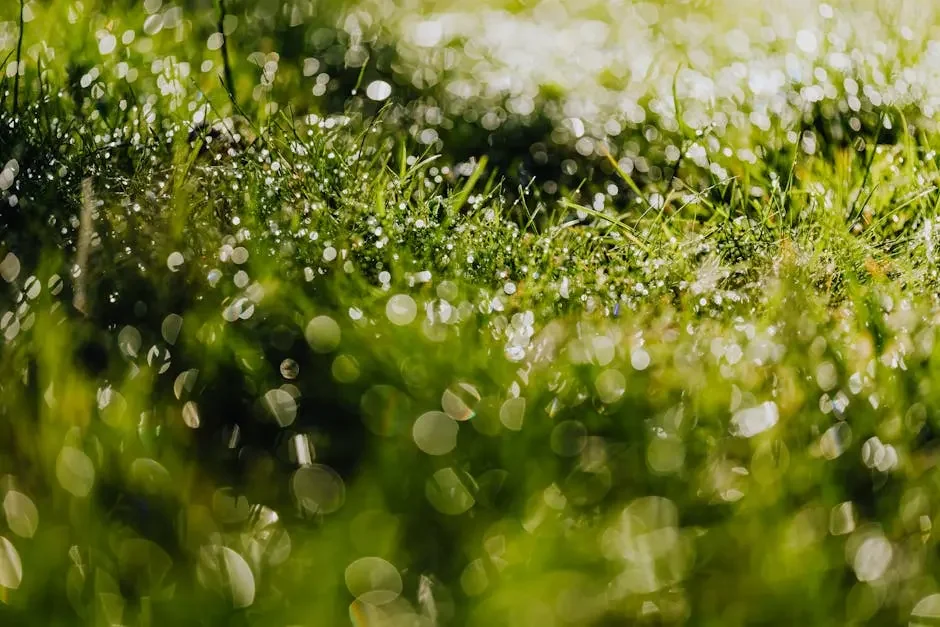Transforming Your Outdoor Space with Gorgeous Dublin Turf
Are you dreaming of a lush, green oasis right in your backyard? Dublin turf can be the perfect solution to transform your outdoor space into a beautifully vibrant and easy-to-maintain garden. In this blog, we'll explore how you can enhance your landscape with the natural beauty and durability of Dublin turf.
Understanding the Benefits of Dublin Turf
Dublin turf is known for its lush texture and resilience, making it perfect for both residential gardens and commercial landscapes. It requires minimal maintenance while providing a stunning, year-round green appearance. The rich color and dense sward it offers make it a preferred choice for those looking to enhance their curb appeal. In addition, the climate in Dublin is conducive to the successful growth of this turf, supporting its deep green hue throughout different seasons.
When choosing Dublin turf, you're not just opting for beauty, but for a solution that's environmentally friendly as well. Turf aides in carbon dioxide absorption, reducing the carbon footprint of your property. By installing it, you're contributing to a decrease in urban heat, a common issue in densely populated areas. This not only makes your surroundings cooler but also ensures a fresher air quality for you and your family to enjoy. Furthermore, a well-maintained lawn can increase property value, making it a smart move financially.
Choosing the Right Type of Turf for Your Space
Selecting the right turf is crucial to ensure that it complements your specific landscape needs. From shaded areas to well-lit gardens, Dublin turf offers diverse varieties to match different environmental conditions. If your space enjoys full sun exposure, opt for a variety that thrives under such conditions. Alternatively, for shaded areas, a shade-tolerant species is recommended. Understanding your space's unique sunlight and soil conditions will guide you in making the best choice to ensure lush, green growth.
It's not just about sunlight; soil type plays a pivotal role in determining the success of your turf. Conducting a soil test can provide valuable insights about pH levels and nutrient content. This helps in selecting the turf that will flourish in your particular soil conditions. Additionally, taking local climate into account ensures long-term survival and health of your lawn. Consult with turf specialists to find the optimal variety for your home or business environment that can provide sustainable beauty over time.
While considering the type of turf, factor in how much time you are willing to allocate for its upkeep. Some turf types are notably low-maintenance, needing less mowing and watering. This can be particularly beneficial for busy homeowners or for commercial spaces where maintenance budgets may be limited. Choose the variety that aligns with your lifestyle and maintenance capabilities to enjoy a beautiful setting without unnecessary stress.
Preparing Your Outdoor Space for Turf Installation
Proper preparation is key to successful turf installation. This includes clearing the area of debris, leveling the ground, and ensuring adequate soil quality to support healthy turf growth. Begin by thoroughly cleaning the area where you intend to lay the turf. Remove all rocks, debris, and any existing plant matter. A cleared area ensures that no obstacles hinder the growth of your new lawn.
Once cleared, focus on leveling the area. This step cannot be overstated, as a well-leveled ground prevents water pooling and promotes even wear. Use a rake to smooth out the soil, making the area as flat as possible. Creating gentle slopes aids with drainage, preventing root waterlogging which could impede lawn health. Ensure the soil is loose to foster strong root anchoring, which is crucial for turf stability and growth. If the soil seems compacted, consider tilling it to rejuvenate its structure.
An often overlooked aspect is the incorporation of nutrients into the soil before laying the turf. Use a high-quality lawn starter fertilizer to enrich the soil with essential nutrients like nitrogen, phosphorous, and potassium. This fortifies the turf's initial phase, helping roots to quickly establish and access necessary nutrients. It's a wise preparation step that pays off in the vibrancy and longevity of your turf, preparing it for robust growth in days to come.
Installing Dublin Turf: A Step-by-Step Guide
Installing turf can be a straightforward process when done correctly. Start by laying the turf in rows, with each roll fitting snugly against the next to reduce visible seams. Utilize a sharp knife to cut and adjust edges, especially around curves and obstacles. Pay attention to joint areas, ensuring they are closely aligned to create a seamless look. Once rolled out, give the turf a good watering to anchor it into the soil.
The first watering should be deep enough to soak the soil thoroughly, encouraging the roots to grow downward. This critical stage of deep watering helps establish a robust root system that supports the turf. Avoid foot traffic during this initial period, as pressure can displace the soil and affect root settling. After a few weeks, the turf will have adhered adequately to the substrate, allowing for more regular lawn activities.
After the initial rollout and watering, subsequent steps involve managing the establishment period. Gradually introduce a mowing schedule, beginning only when the turf blade has grown a few centimeters. Keep the mower blades sharp to avoid tugging at the new grass, which could dislodge or damage the young lawn. During winter months, install the turf slightly overlapping if you anticipate ground contraction and minimize gaps forming between rolls.
Maintaining Your New Turf for Longevity and Beauty
Once your Dublin turf is installed, maintaining it is a breeze. Regular watering, occasional mowing, and timely fertilization will keep your lawn looking lush and healthy throughout the year. Water your lawn early in the morning to ensure that water evaporates less, providing deeper soil penetration. Depending on the season, reduce or increase watering frequency to suit the turf's growing needs.
Mowing is crucial for turf maintenance. Aim for a weekly cut in the growing seasons, adjusting your mower to a suitable height to avoid scalping the lawn. Keeping the blades sharp prevents grass tearing, which can create dull patches. Additionally, lawn aeration can help improve air circulation and nutrient absorption. This is particularly beneficial for high-traffic areas where soil compaction can occur.
Besides watering and mowing, consistent fertilization ensures your turf remains vibrant. Use a balanced fertilizer periodically based on seasonal needs, with care instructions tailored for the specific type of Dublin turf you've selected. Finally, watch for signs of lawn pests or diseases, addressing them swiftly to maintain a pristine, healthy green landscape year-round. For expert care, explore our comprehensive landscaping services to support your lawn's health and appeal.
Creating Your Green Haven with Dublin Turf
Transforming your outdoor space with Dublin turf is an investment that offers aesthetic appeal, practicality, and sustainability. Whether you are hosting gatherings or seeking a peaceful green retreat, the versatility and beauty of Dublin turf can help you achieve the outdoor haven of your dreams. Discover the wide range of services we offer to help you achieve your perfect green space.

